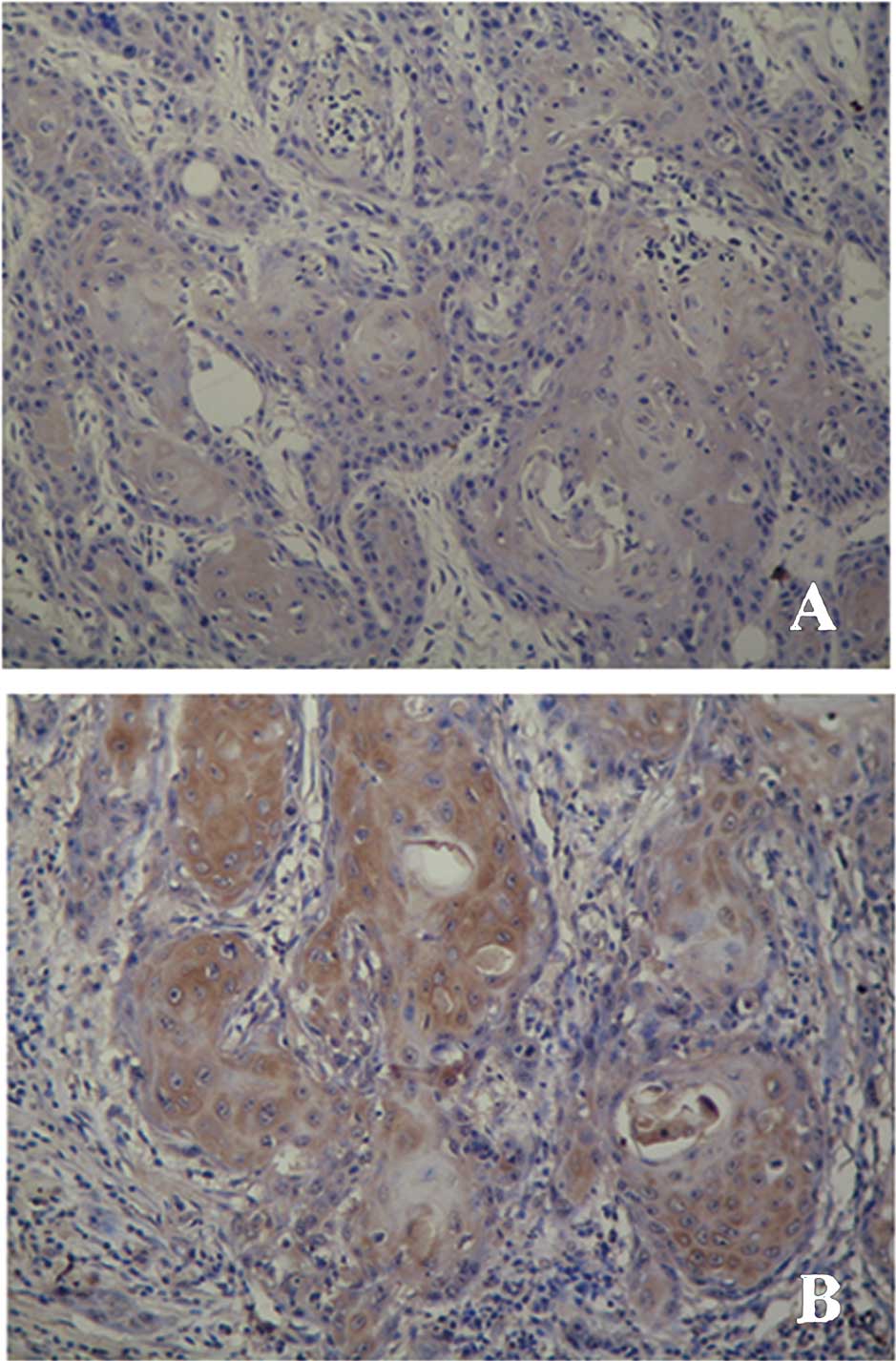Contactin 1 (CNTN1) expression associates with regional lymph node metastasis and is a novel predictor of prognosis in patients with oral squamous cell carcinoma
- Authors:
- Published online on: May 9, 2012 https://doi.org/10.3892/mmr.2012.910
- Pages: 265-270
-
Copyright: © Wu et al. This is an open access article distributed under the terms of Creative Commons Attribution License [CC BY_NC 3.0].
Metrics:
Total
Views: 0 (Spandidos Publications: | PMC Statistics:
)
Total PDF Downloads: 0 (Spandidos Publications: | PMC Statistics:
)
Abstract
The contactin 1 (CNTN1) gene exerts oncogene‑like activities and its expression has been linked to several human malignancies. In this study, a possible association between CNTN1 expression and clinicopathological parameters and clinical outcomes in patients with oral squamous cell carcinoma (OSCC) was examined. CNTN1 protein expression was evaluated by immunohistochemistry in OSCC tissues of 45 patients. For the immunohistochemical assessment of CNTN1 expression, the cytoplasmic staining labeling index was analyzed using a semiquantitative score. The association between CNTN1 protein levels and clinicopathological factors was analyzed using the Mann-Whitney U test for categorical variables and the Kruskal-Wallis test for continuous variables. The effects of CNTN1 expression on overall and disease-free survival were assessed by using univariate survival analysis. The transcript levels of CNTN1 were detected in OSCC cell lines. In addition, specific siRNA against CNTN1 was applied to investigate the effect exerted by CNTN1 ablation on OSCC cell lines by proliferation and invasion assays in vitro. During follow-up, 16 patients (35.56%) had succumbed to OSCC; the median follow-up of patients was 5.0 years (range, 0.2-8.3). A high expression of CNTN1 was markedly associated with the regional lymph node metastasis of patients with OSCC (P=0.006). CNTN1 expression was significantly associated with overall survival of patients with OSCC (P=0.032; log-rank test) and disease-free survival of patients with OSCC (P=0.038; log-rank test). In addition, CNTN1 ablation notably suppressed the invasion potential of OSCC cell lines, but there was no significant change in the proliferation of OSCC cell lines by CNTN1 knockdown in vitro. The study supports CNTN1 as a novel predictor of regional lymph node metastasis in patients with OSCC and a prognostic marker for OSCC in patients.














